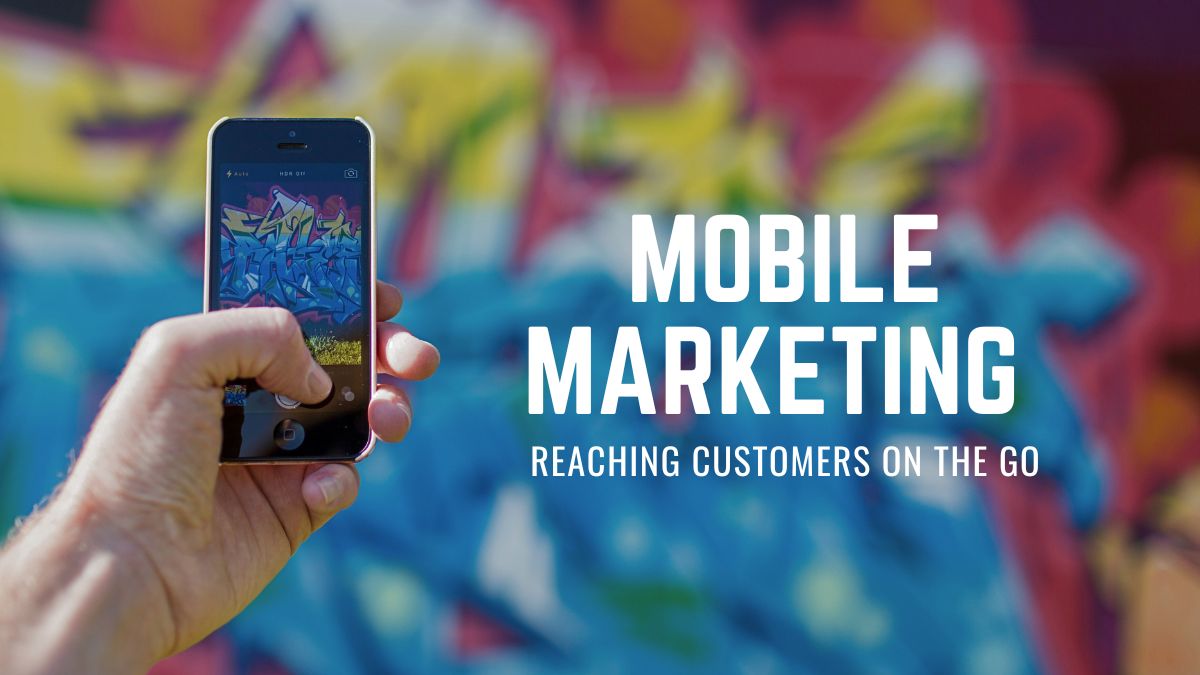
In today’s fast-paced world, mobile devices have become an integral part of our daily lives. People are constantly on the move, relying on their smartphones and tablets to stay connected and informed. As a result, mobile marketing has emerged as a powerful strategy to reach customers wherever they are. In this blog post, we will explore the importance of mobile marketing and provide valuable insights on how businesses can effectively engage with their mobile audience.
1. The Mobile Revolution:
The mobile revolution is in full swing, with more people than ever using their smartphones and tablets to access the internet. According to recent statistics, mobile devices are now the primary means of accessing the internet for over half of all global website traffic. Moreover, a study shows that 80% of internet users own a smartphone, and they spend an average of 5 hours a day on it.
This significant rise in mobile device usage has had a profound impact on consumer behavior. Today’s consumers demand instant gratification and expect businesses to cater to their needs anytime and anywhere. Mobile marketing has emerged as one of the most effective ways for companies to reach consumers directly on their smartphones or tablets. This includes everything from mobile-friendly websites and social media campaigns to targeted SMS or pushes notifications.
2. Optimizing for Mobile:
With more people accessing the internet on their smartphones and tablets than ever before, it is essential to optimize your website for mobile devices. One critical aspect of this optimization is responsive web design. This means that your website should be designed to adapt to the size and resolution of various screens, including desktops, laptops, tablets, and smartphones.
If your website is not optimized for mobile devices, you risk losing potential customers. Studies have shown that more than 50% of all internet traffic now comes from mobile devices. If your site does not load quickly or is difficult to navigate on a smartphone or tablet screen, visitors are likely to leave quickly in search of a better experience elsewhere. A poor mobile user experience can also negatively impact your search engine rankings as Google prioritizes websites that are optimized for mobile devices.
3. Mobile Advertising:
Mobile advertising has become an effective way for businesses to reach their target audience on the go. With the increasing use of smartphones and tablets, mobile marketing can be a highly effective tool for companies looking to increase brand awareness and drive traffic to their websites. There are various channels that businesses can explore to maximize the potential of mobile advertising.
One popular channel is through mobile apps, which offer a captive audience for businesses looking to advertise their products or services. In-app ads are also becoming increasingly popular as they allow advertisers to reach consumers while they are actively engaged with an app. Another option is mobile search ads, which allow businesses to show relevant ads based on a user’s search query. Social media advertising is also a powerful tool for companies looking to promote their products or services through platforms such as Facebook, Instagram, and Twitter.
4. Location-Based Marketing:
One of the most exciting developments in this area is location-based marketing, which allows companies to target consumers based on where they are physically located. By leveraging GPS technology, businesses can identify when a user is near one of their stores or events and send them personalized messages designed to encourage engagement.
The power of location-based marketing lies in its ability to give businesses more precise targeting capabilities than ever before. Rather than simply blasting out generic ads or promotions, brands can use real-time data about a customer’s location and behavior patterns to craft highly relevant messages that resonate with them on a personal level. This kind of personalized approach is much more effective at driving conversions and building brand loyalty than traditional advertising methods.
5. Mobile Apps:
Mobile apps are an integral part of a comprehensive mobile marketing strategy as they offer numerous benefits that boost customer engagement, retention, and brand loyalty.
One of the key benefits of having a mobile app is convenience. With the increasingly busy lives people lead, convenience is paramount to retaining customers. Mobile apps offer easy access to your products or services at any time and from anywhere with just a few taps on their smartphone screens. This helps create a seamless user experience and enhances customer satisfaction while also helping businesses stand out in crowded markets.
Mobile apps also foster stronger customer relationships by allowing businesses to create personalized experiences based on individual preferences, buying behavior, location data, and other factors.
6. SMS and Push Notifications:
With the increasing use of smartphones and other mobile devices, SMS marketing and push notifications have emerged as powerful tools for reaching customers directly on their mobile devices.
SMS marketing involves sending promotional messages to customers’ phones via text messaging. These messages can range from product updates to exclusive discounts and can be customized to target specific groups based on demographics or purchasing history. Unlike email or social media campaigns, SMS messages are delivered instantly and have a higher open rate, making them a highly effective form of direct marketing.
Push notifications are alerts sent directly to a user’s phone through an app they have downloaded. These notifications can be personalized based on the user’s preferences or behavior within the app. They can also include links to specific content or offers within the app, encouraging users to engage with your brand in real time.
7. Mobile-Friendly Content:
With the increasing number of mobile users, businesses need to create mobile-friendly content that resonates with users on smaller screens. It is imperative to ensure that your website is optimized for mobile devices because failing to do so can result in losing potential customers.
Creating mobile-friendly content involves taking into consideration the difference in screen sizes and user behavior between desktop and mobile devices. The goal is to make sure that your website loads quickly, images are compressed, text is easy to read, and buttons are large enough for users to click without difficulty. If your website isn’t optimized for mobile devices, it will likely have higher bounce rates and lower conversion rates compared to competitors who have invested in creating responsive websites.
8. Mobile Payment Solutions:
Mobile payment solutions have become increasingly popular in recent years, with more and more people turning to their mobile devices to make purchases. Mobile wallets, which allow users to store credit card information on their smartphones for quick and easy payments, have gained significant traction among consumers who value convenience and speed. Contactless payments, which use near-field communication (NFC) technology to enable secure transactions without the need for physical contact between a consumer’s device and a payment terminal, are also becoming more prevalent.
There are many benefits to using mobile payment solutions for both consumers and merchants. For consumers, mobile payments offer greater convenience and security than traditional payment methods such as cash or credit cards. With a mobile wallet app installed on their smartphone, users can make purchases quickly and easily by simply tapping their device against an NFC-enabled terminal.
9. Measuring Mobile Success:
Mobile marketing has taken the world by storm, especially in recent years. With more people accessing the internet via mobile devices than ever before, businesses must embrace mobile marketing campaigns. But how can you measure its success? This is where key metrics and tools come into play.
One of the most important metrics to consider is conversion rate. This measures how many people who engaged with your mobile campaign ended up taking a desired action, such as making a purchase or filling out a form. Another essential metric is click-through rate (CTR), which measures how many people clicked on your ads or links compared to those who viewed them but didn’t click. These two metrics provide valuable insights into the effectiveness of your mobile marketing campaign.
To track these metrics and other relevant data, there are various tools available.
Conclusion:
Mobile marketing presents a tremendous opportunity for businesses to connect with customers. Businesses can effectively reach their mobile audience and drive meaningful interactions by optimizing their websites, leveraging mobile advertising channels, creating engaging mobile apps, and delivering personalized content and offers. Embrace the mobile revolution, adapt to changing consumer behaviors, and unlock the full potential of mobile marketing to stay ahead in the digital landscape.




